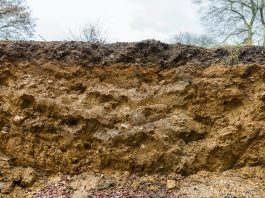An international team of geochemists have unearthed why discovering gold deposits is so elusive, providing new insights into the formation of the precious metal.
The team, led by Dr Gleb Pokrovski from the University of Toulouse, has identified that arsenic – a metalloid component of the Earth’s crust that can have devastating effects on human health, such as causing cancer and skin lesions – may be crucial in creating gold deposits, which potentially explains why many gold miners have experienced arsenic poisoning.
Enigmatic origins of gold deposits
Gold deposits are an incredibly rare occurrence on Earth, with the precious metal inspiring people to hunt for the treasure for thousands of years due to its purity and stability that make it such a lucrative commodity. Gold is an unreactive metal, meaning that there is little justification as to why gold deposits should be concentrated instead of being consistently distributed throughout the Earth’s crust.
Due to being so exceptionally rare, gold retains its value incredibly well, with the World Gold Council estimating that the total amount of the gold that has ever been mined on Earth could fit into an area of a mere 20x20x20 metres. Gold is one of the most inert metals in the periodic table, as it doesn’t react with other substances very easily, which begs the question, how do gold deposits with a sufficient quantity to mine come into formation?
Although gold can sometimes be found in gold nuggets, most predominantly, it is discovered bound within minerals and is known to be related to iron and arsenic-containing minerals, such as arsenopyrite and pyrite. These minerals are crucial in the formation of gold deposits, as they act like a sponge, soaking up and concentrating gold over one million times more than anywhere else in nature, such as hot spring water that transport the gold, which becomes chemically bound to the minerals, making the gold invisible to the naked eye.
Analysing gold concentrating minerals
To examine the behaviour of the gold-concentrating minerals, the team utilised the European Synchrotron (ESRF) intense x-ray beams at Grenoble in France, which is proficient at studying the chemical bonds between the gold and minerals. The scientists discovered that when a mineral is supplemented with arsenic, the gold can penetrate the mineral structural sits by binding to the arsenic, allowing the gold to stabilise in the mineral. In contrast, when the concentration of arsenic is low, the gold cannot enter the mineral structure, forming weak gold-sulphur bonds with the mineral surface instead.
Pokrovski said: “Our results show that arsenic drives the concentration of gold. This arsenic-driven gold pump explains how these iron sulphides can massively capture and then release gold, so controlling ore deposit formation and distribution. In practical terms, it means that it will make it easier to find new sources of gold and other precious metals, which bind to arsenic-containing iron sulfides. It may also open the door to controlling the chemical reactions, and if we can improve gold processing, we can recover more gold.
“It has been known for centuries that gold is found with arsenic, and this has caused severe health problems for gold miners. Now we know what happens at an atomic level, we can begin to see if there’s anything we can do to prevent this.”
The link between gold and arsenic has been well documented, especially in France, where the Salsigne mine – one of the largest gold mines in Western Europe – had to shut in 2004, as it was the world largest producer of arsenic, with the environmental effects of arsenic pollution still continuing in the region.
Dr Jeffrey Hedenquist, from the University of Ottawa, said: “Geologists, as well as prospectors, have long known that gold can be associated with arsenic-rich minerals, and over the past few decades, others have quantified this association. The findings of Dr Pokrovski and his team now help to explain why we see this association, caused by an atomic-scale attraction between gold and arsenic, with this marriage arranged by the structure of certain minerals.”









